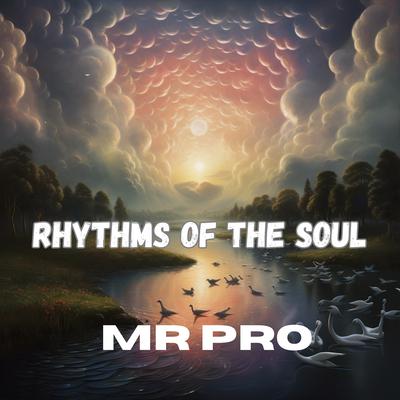Want to get your music out to over 40k radio and sound system dis? CLICK HERE
Stay up-to-date with all that's new at Dancehallreggaeworld, Click Here to subscribe for my updates and don't miss a thing!
How to Prepare for a Live Vocal Performance
An impressive performance appears effortless to the degree that the artist has put effort into the preparation of every detail.
It is a given that you’ll learn your songs musically and lyrically before you perform them, but don’t neglect to practice the performance of your show.
A show is a multi-media presentation. How it is performed should include visual and other sensory perceptions for your audience.
As a project voice and performance coach I’ve helped an array of talent, from rising stars to Grammy winning recording artists, prepare for live shows and studio recordings. The following 13 tips are essential guidelines for your impressive performance preparation checklist.
Plan Your Performance Set List
1) Know your venue: Creating a set list for a small intimate coffee house requires different planning than for a stadium concert. The dynamics and energy potential is vastly different between the two. Before you create your set list find out as much as you can about the venue and its vibe.
2) Know your set length: Clock the playing time of each of your songs. Then determine how many songs you can play within the required set length. Factor in additional time for up to one minute of applause between each song, any dialogue with the audience, stage adjustments or instrument changes and any other segues. It’s a bit of a mathematical estimation that improves as you get more experience doing it. Also plan an extra song or two for encores or just in case they ask you to play longer.
3) Know any equipment and size limitations of the venue: You may have been booked to perform in clubs with a different electrical voltage than your equipment or other types of unforeseen limitations. A band I coached once mixed tracks from their iPad in with their live band sound. When they arrived to play one of the gigs on their tour, the venue was not equipped to connect iPad to the sound system. Needless to say, the stress and pressure of having to figure out what to play and how to play it made for an unpleasant evening for the band and unprofessional show for the audience. Make a list of your needs and check with your booking contacts so that you solve equipment and facility issues before you arrive at the venue.
4) Know your audience: Depending upon how many shows you have done and how long you have had fans, you hopefully will know what songs in your repertoire get the best responses. Plan to use your most popular songs as the emotional peaks of your set to create dynamic motion in your show. If you’re opening for another band, familiarize yourself with their music. Then design your set to both complement and contrast with their music in such a way as to possibly win over their fans. This is a great way to expand your fan base.
5) Determine your opening and ending numbers: Think of your opening and closing songs like bookends. A set should start with a song that grabs the attention of your audience and end with a song that either rouses or calms them to the energy level you want them to have when they leave the venue. Then arrange the rest of the set to navigate your audience through planned emotional transformations – from one bookend to another – based upon the tempo, key changes, subject matter and instrumentation of your songs.
12 Tips: How to Prepare for a Live Vocal Performance
Tips: How to Prepare for a Live Vocal Performance
6) Vary your vocal range: Even though your songs keys may be different, it’s common for a singer’s melodies to center in the strongest area of their vocal range. If this is true of your music, you may want to find a way of varying this with a song that brings the voice lower or higher or in some way gives
Practice the Performance of Your Set
7) Practice technical as well as performance skills: Attention to the technical aspects of a song is of course part of how you develop it. Improving any needed vocal technique to sing a song well is or course important, but so is honing performance skill.
Once you know a song begin singing it as though you were doing so in front of your audience. The more you practice as though singing to the audience the more your song will come to life. Often your phrasing and vocal tone will improve as will your emotional consistency when you practice singing to someone. This is because singing is communicating and that is done TO someone. Practicing as though you’re ON stage and singing TO people – your voice will naturally become more expressive. Doing this will influence your phrasing and tone because these are now aligned to their purpose of expressing something to someone. This kind of practice bridges the gap between rehearsal and performance.
8) Practice your set in set order: Once you’ve achieved comfort singing each song in your set, it’s important to rehearse in set order. While doing so look for and make adjustments as needed: Ensure you like the energy and emotional flow and sequence of your selected song order; explore your dynamics within each song and from one song to the next; decide between which songs that you’ll speak to your audience. If your set contains equipment changes and utilizes backup singers, group songs in such a way to ensure that any stage changes don’t dampen the momentum of your show.
9) Video your rehearsals: Use video to validate your improvement and highlight what needs more work. Analyze your practice videos objectively for the purpose of improving — not to beat yourself up. If something needs more technical attention such as singing higher notes on pitch or better phrasing, go back to working on these issues before further practicing the performance of the song.
10) Practice entrances and exits: Also practice how you’re going to walk on stage. At the end of the set, practice how you might walk off stage. Other things to consider: Are you going to have the band start playing and then enter? Are you going to exit while the band is still playing and then reappear for the final applause?
11) Practice band/ensemble staging and interaction: Performing is as much visual as it is audio. All aspects when aligned add to the magic and power of your show. This begins in the rehearsal room and then comes fully to life on stage.
12) Practice talking to your audience: There are times to talk and times to let your music do the talking for you. If you’re comfortable talking to audiences, I still suggest making decisions on where in your set you’ll do so and decide on a theme. Instead of leading in each song with “I wrote this song…” try saying a few lines about the theme of the next song and then go right into it. Remember, even if you’re expert at talking spontaneously to your audience, talking between numbers changes the energy of your show. If you want to maintain high energy, when you do speak, say less and play more.
13) Schedule low pressure gigs: If you’re starting out and want to become a professional level performer, consider booking some low pressure gigs to begin working on your presentation. Musicians rarely if ever make it to the big leagues without a lot of playing out. As you perform, you’ll raise your level of expertise, reinforce your strengths and discover those areas in which you need further development. Live performance keeps your rehearsals and personal practice focused on what really needs improvement. Remedy any shortcomings, get better, gig out again and step by step you’ll become a top professional.
Want to learn more about Reggae Music? check these pages below...
New! Talk to me
Was the information helpful? Something needs changing? I welcome your feedback here.
Great Articles You Might Have Missed
Please send us your Feedback, News, Photos, Press Releases, Music and/or Videos to our WhatsApp Number: 1-876-395-8008 or Email: necoflex@gmail.com
Not what you are looking for? Search the web for more Dancehall Reggae music information below...




